
Maritime transportation company Matson (NYSE:MATX) missed Wall Street’s revenue expectations in Q1 CY2025, but sales rose 8.3% year on year to $782 million. Its GAAP profit of $2.18 per share was 3.8% below analysts’ consensus estimates.
Is now the time to buy Matson? Find out by accessing our full research report, it’s free.
Matson (MATX) Q1 CY2025 Highlights:
- Revenue: $782 million vs analyst estimates of $818.1 million (8.3% year-on-year growth, 4.4% miss)
- EPS (GAAP): $2.18 vs analyst expectations of $2.27 (3.8% miss)
- Adjusted EBITDA: $131.7 million vs analyst estimates of $136 million (16.8% margin, 3.2% miss)
- Operating Margin: 10.5%, up from 5.1% in the same quarter last year
- Free Cash Flow was -$200,000 compared to -$18.7 million in the same quarter last year
- Market Capitalization: $3.72 billion
Matt Cox, Matson's Chairman and Chief Executive Officer, commented, "Our first quarter financial performance was as expected with significantly higher year-over-year consolidated operating income. The year-over-year increase was primarily driven by our China service, which benefitted from the carryover of elevated freight rates from the fourth quarter of 2024 combined with healthy freight demand following a traditional post-Lunar New Year period. For our domestic tradelanes, we saw higher year-over-year volume in Hawaii and Alaska and lower year-over-year volume in Guam. In Logistics, our operating income was lower year-over-year primarily due to a lower contribution from freight forwarding and transportation brokerage, partially offset by a higher contribution from supply chain management."
Company Overview
Founded by a Swedish orphan, Matson (NYSE:MATX) is a provider of ocean transportation and logistics services.
Sales Growth
Examining a company’s long-term performance can provide clues about its quality. Any business can experience short-term success, but top-performing ones enjoy sustained growth for years. Thankfully, Matson’s 9.8% annualized revenue growth over the last five years was solid. Its growth beat the average industrials company and shows its offerings resonate with customers.
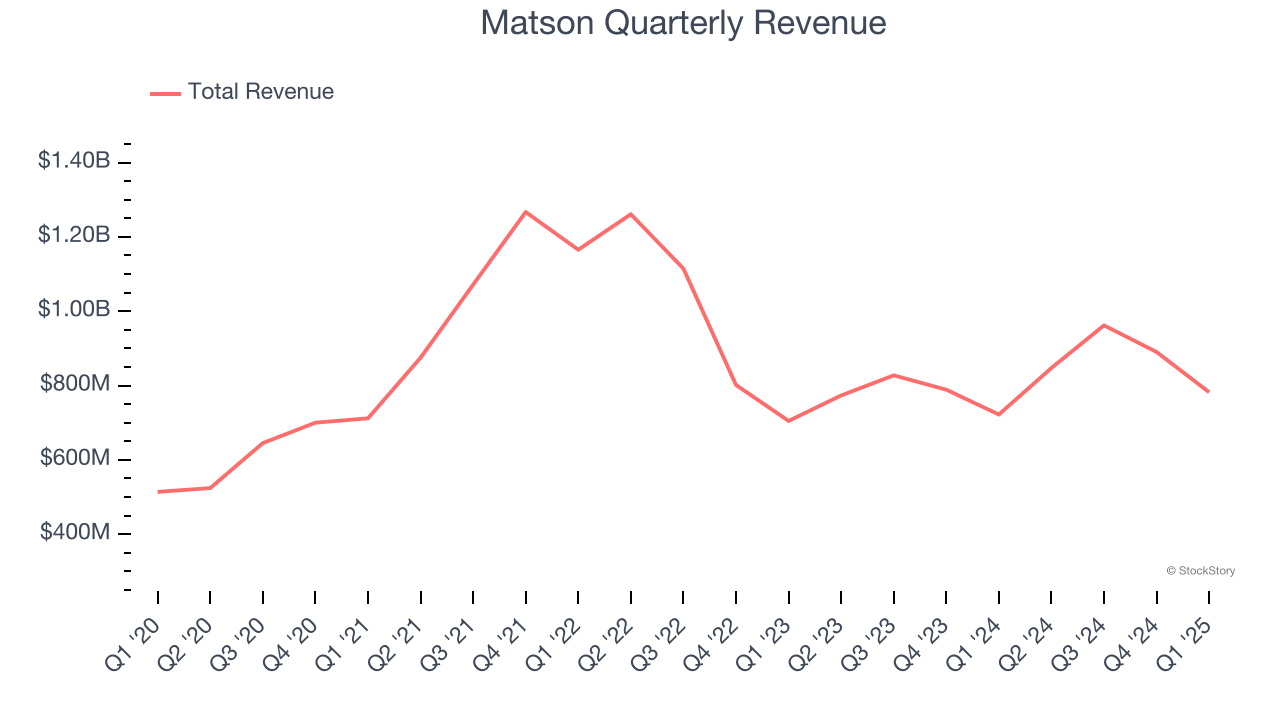
Long-term growth is the most important, but within industrials, a half-decade historical view may miss new industry trends or demand cycles. Matson’s recent performance marks a sharp pivot from its five-year trend as its revenue has shown annualized declines of 5.3% over the last two years. Matson isn’t alone in its struggles as the Marine Transportation industry experienced a cyclical downturn, with many similar businesses observing lower sales at this time. 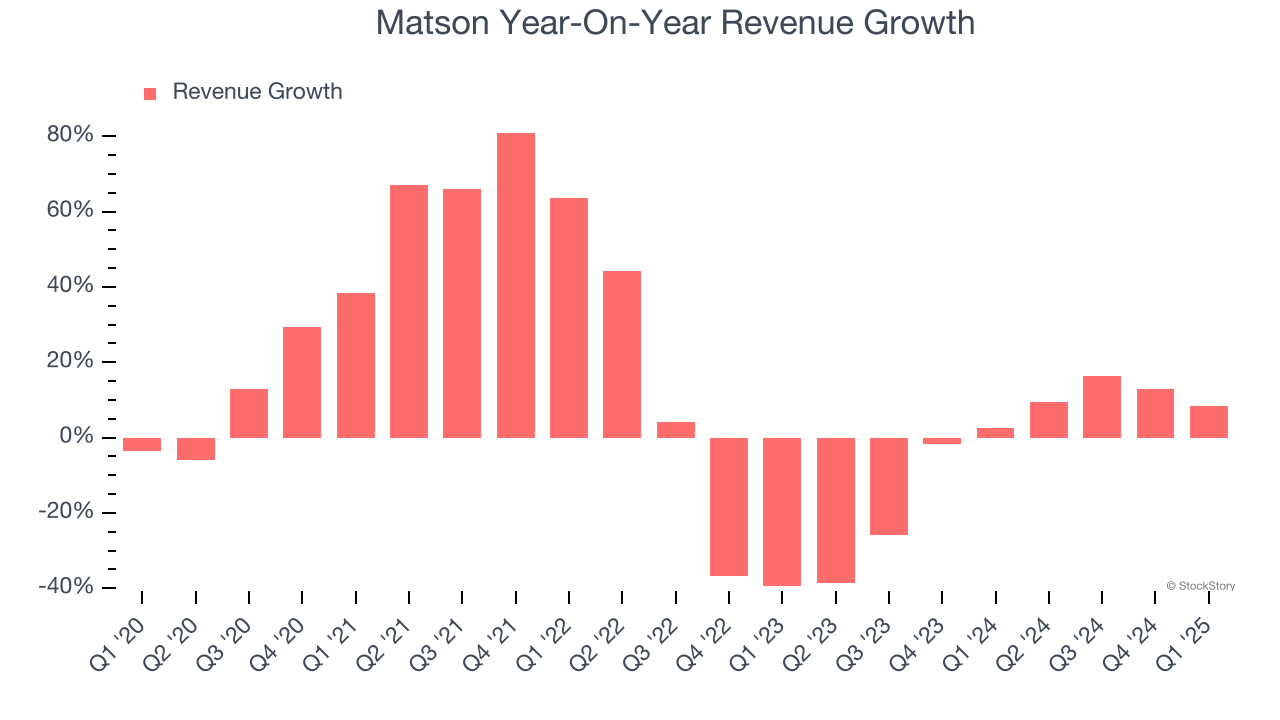
This quarter, Matson’s revenue grew by 8.3% year on year to $782 million, missing Wall Street’s estimates.
Looking ahead, sell-side analysts expect revenue to decline by 3.5% over the next 12 months. Although this projection is better than its two-year trend, it's hard to get excited about a company that is struggling with demand.
Unless you’ve been living under a rock, it should be obvious by now that generative AI is going to have a huge impact on how large corporations do business. While Nvidia and AMD are trading close to all-time highs, we prefer a lesser-known (but still profitable) stock benefiting from the rise of AI. Click here to access our free report one of our favorites growth stories.
Operating Margin
Operating margin is one of the best measures of profitability because it tells us how much money a company takes home after procuring and manufacturing its products, marketing and selling those products, and most importantly, keeping them relevant through research and development.
Matson has been a well-oiled machine over the last five years. It demonstrated elite profitability for an industrials business, boasting an average operating margin of 21.7%. This result was particularly impressive because of its low gross margin, which is mostly a factor of what it sells and takes huge shifts to move meaningfully. Companies have more control over their operating margins, and it’s a show of well-managed operations if they’re high when gross margins are low.
Looking at the trend in its profitability, Matson’s operating margin rose by 2.1 percentage points over the last five years, as its sales growth gave it operating leverage.
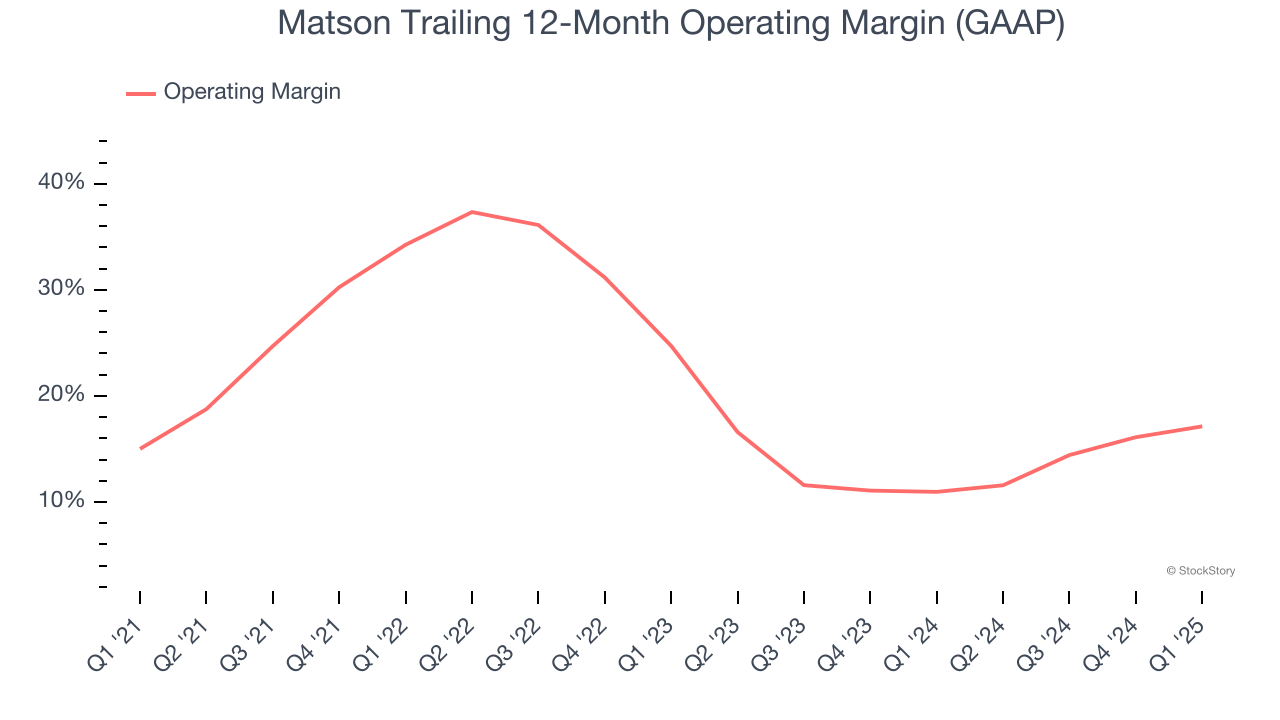
In Q1, Matson generated an operating profit margin of 10.5%, up 5.4 percentage points year on year. The increase was solid, and because its operating margin rose more than its gross margin, we can infer it was more efficient with expenses such as marketing, R&D, and administrative overhead.
Earnings Per Share
We track the long-term change in earnings per share (EPS) for the same reason as long-term revenue growth. Compared to revenue, however, EPS highlights whether a company’s growth is profitable.
Matson’s EPS grew at an astounding 54.8% compounded annual growth rate over the last five years, higher than its 9.8% annualized revenue growth. This tells us the company became more profitable on a per-share basis as it expanded.
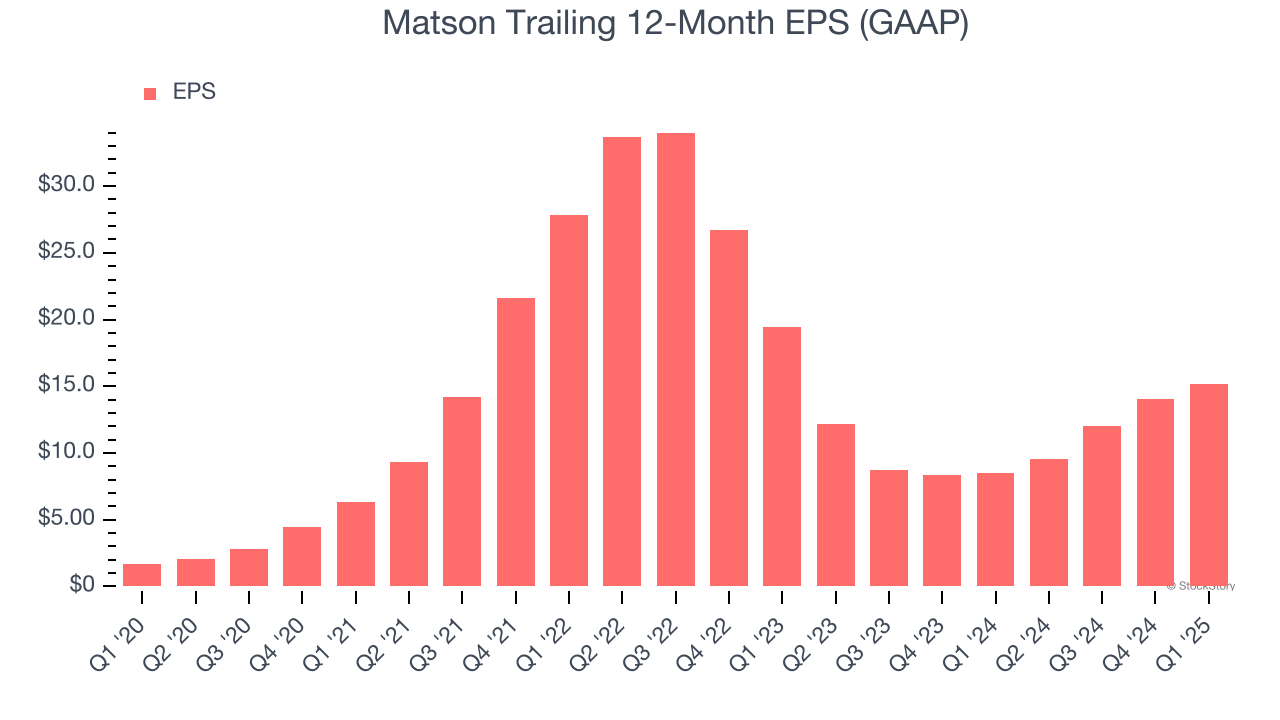
Diving into the nuances of Matson’s earnings can give us a better understanding of its performance. As we mentioned earlier, Matson’s operating margin expanded by 2.1 percentage points over the last five years. On top of that, its share count shrank by 23.3%. These are positive signs for shareholders because improving profitability and share buybacks turbocharge EPS growth relative to revenue growth. 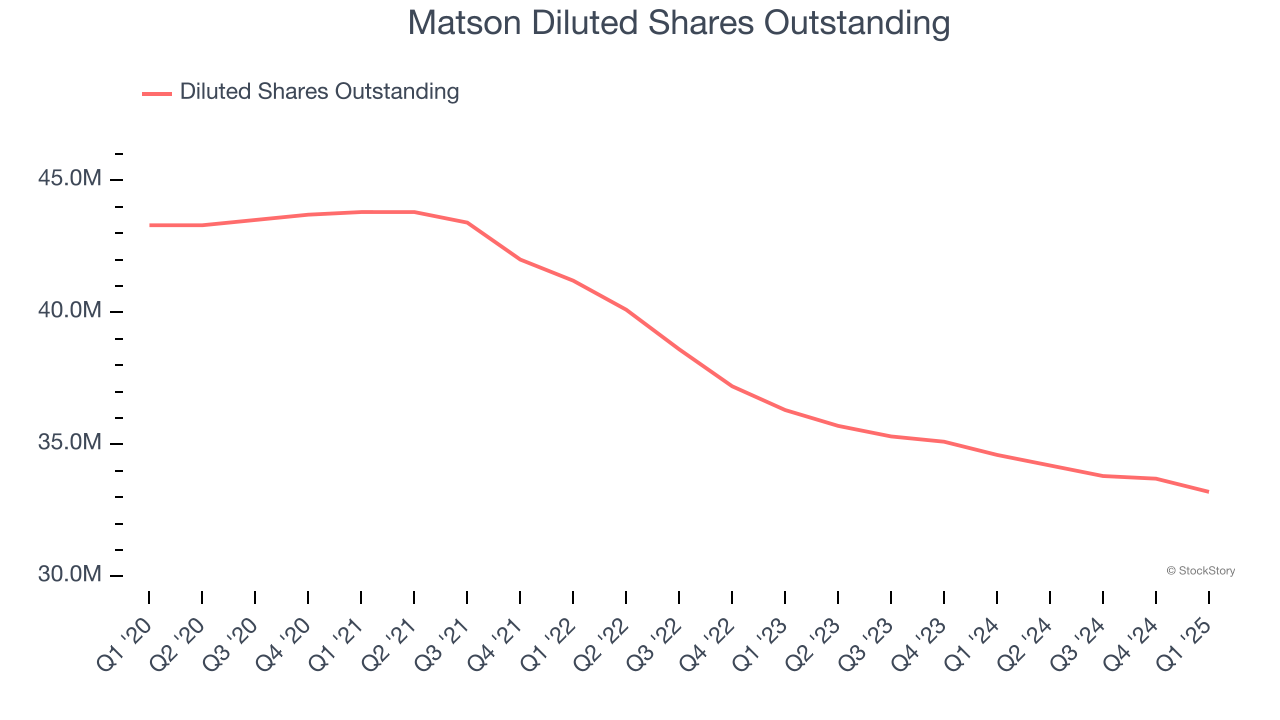
Like with revenue, we analyze EPS over a more recent period because it can provide insight into an emerging theme or development for the business.
For Matson, its two-year annual EPS declines of 11.6% mark a reversal from its (seemingly) healthy five-year trend. We hope Matson can return to earnings growth in the future.
In Q1, Matson reported EPS at $2.18, up from $1.04 in the same quarter last year. Despite growing year on year, this print missed analysts’ estimates, but we care more about long-term EPS growth than short-term movements. Over the next 12 months, Wall Street expects Matson’s full-year EPS of $15.18 to shrink by 34.3%.
Key Takeaways from Matson’s Q1 Results
We struggled to find many positives in these results. Its revenue missed significantly and its EPS fell short of Wall Street’s estimates. Overall, this quarter could have been better. The stock traded down 9.1% to $100 immediately after reporting.
Matson’s earnings report left more to be desired. Let’s look forward to see if this quarter has created an opportunity to buy the stock. We think that the latest quarter is only one piece of the longer-term business quality puzzle. Quality, when combined with valuation, can help determine if the stock is a buy. We cover that in our actionable full research report which you can read here, it’s free.
